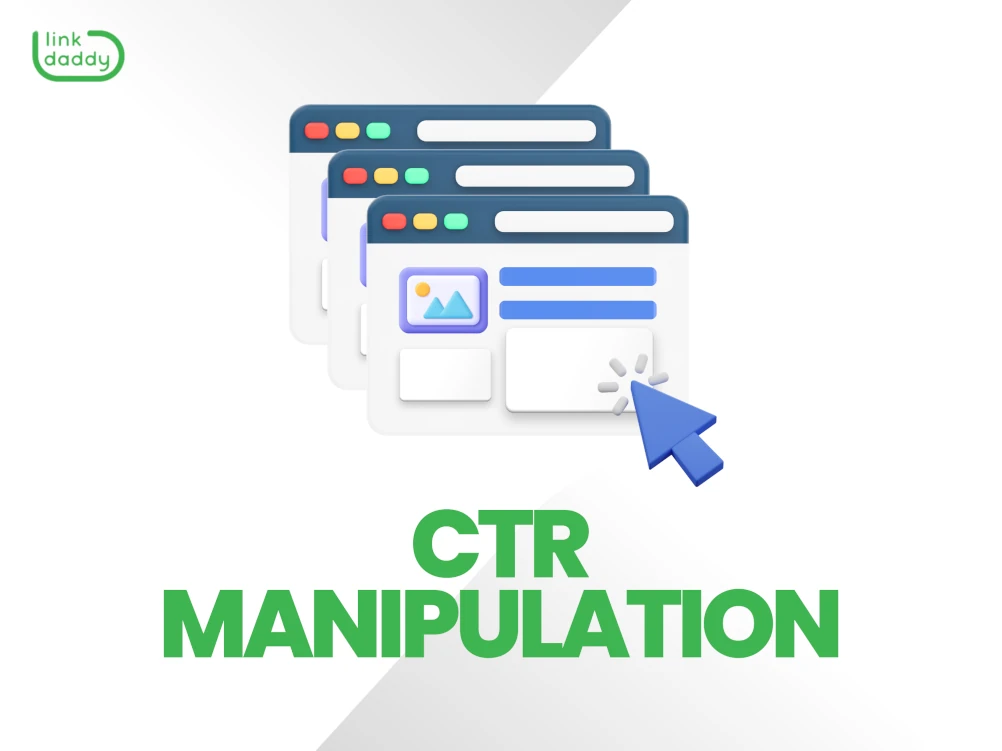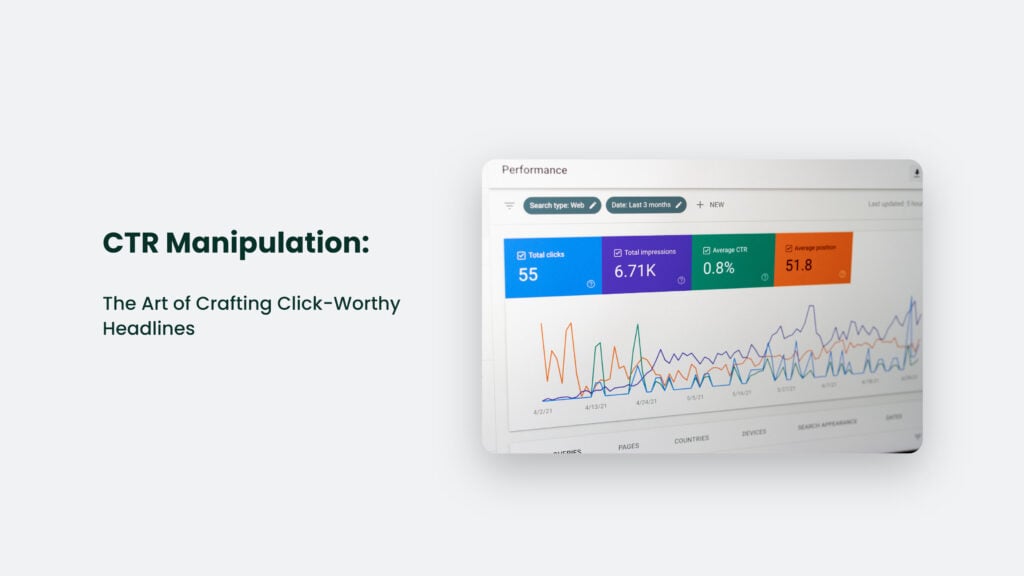Unlocking the Possible of GMB CTR Manipulation for Better Citizen Presence
Unlocking the Possible of GMB CTR Manipulation for Better Citizen Presence
Blog Article
The Duty of CTR Control in Modern SEO
CTR control, a questionable practice in modern-day search engine optimization, raises significant questions regarding its efficacy and honest effects. As algorithms advance to focus on user experience, the temptation to synthetically boost click-through prices lingers. However, the pitfalls of such methods impend large, risking charges and reputational damages. The dispute around the duty of CTR adjustment fit search presence highlights the delicate equilibrium between short-term gains and long-term sustainability in the ever-evolving landscape of electronic advertising.
Recognizing CTR and Its Significance
CTR, or Click-Through Rate, is an essential statistics in the realm of Search Engine Optimization (SEARCH ENGINE OPTIMIZATION) that gauges the percent of individuals that click a specific web link out of the overall number of users that see it. Comprehending CTR is crucial for search engine optimization professionals as it offers understandings right into the efficiency of a specific web link or ad. A high CTR suggests that the web link is interesting and appropriate to customers, which can favorably affect an internet site's rankings in internet search engine results web pages.
By analyzing CTR data, online marketers can analyze the appeal of their material, keywords, and targeting techniques. In significance, CTR is a basic metric that influences individual involvement, website web traffic, and ultimately, the success of SEO efforts.
Aspects Influencing CTR in SEO
When examining the performance of a site or on-line project, it is important to take into consideration various aspects that can affect individual interaction and Click-Through Rate (CTR) in Seo (SEO) The title tags and meta summaries of a page play a significant function in drawing in individuals to click on the link in online search engine outcomes. Compelling and relevant titles and descriptions can raise the chance of individuals clicking via to the internet site.

Moreover, the use of relevant key words in titles, meta summaries, and material can also affect CTR. Comprehending the search intent of individuals and lining up the material with their inquiries can improve click-through rates and general SEO efficiency.
Techniques for Improving CTR
To enhance Click-Through Rates (CTR) in search engine optimization, applying reliable methods is vital. One essential strategy is maximizing meta titles and descriptions to make them engaging and pertinent to the search questions. Crafting luring meta descriptions that consist of pertinent search phrases can tempt individuals to click the web link. One more efficient approach is to utilize more helpful hints schema markup to improve the look of search results, making them more informative and enticing. Furthermore, making use of power words, numbers, and special characters can make the search engine result attract attention and attract even more clicks.
Furthermore, producing premium and appealing content is crucial for enhancing CTR. Making use of multimedia components like video clips and pictures can additionally make the search results extra appealing and boost CTR.

Dangers and Moral Considerations
One of the key dangers of CTR control is the capacity for fines from search engines. Search engines like Google have innovative algorithms that can detect abnormal spikes in CTR, leading to potential penalization and a decline in rankings. Furthermore, controling CTR can result in an inadequate user experience by tricking users into clicking on web links that may not be pertinent to their search inquiries.

Assessing the Effect On Rankings
In analyzing the effect of Click-Through Price (CTR) control on search engine positions, it becomes evident that the practice can have both instant and long-term effects for a site's presence and performance. Originally, synthetically blowing up CTR may bring about a momentary boost in positions as online search engine analyze high click-through rates as a signal of importance and popularity. If the increased CTR is not backed by genuine user involvement, search formulas can discover this manipulation, resulting in charges such as lowered positions or even removal from search results.
If a site constantly fails to satisfy individual expectations post-click, it can experience a decline in positions in spite of any preliminary gains from CTR control. Inevitably, concentrating on enhancing natural CTR via real, interesting web content and customer experience is critical for lasting SEO success.
Conclusion
To conclude, while CTR manipulation might supply temporary advantages in SEO, it positions significant threats to trustworthiness and long-lasting success. Browse engines like Google are progressively competent at finding such methods, resulting in charges and visit this web-site reduced trust fund from customers. GMB CTR Manipulation. Lasting search engine optimization techniques, concentrating on real material and user involvement, are crucial for keeping credibility and achieving lasting success in search positions
CTR, or Click-Through Rate, is a critical metric in the world of Search Engine Optimization (SEARCH ENGINE OPTIMIZATION) that measures the portion of individuals who click on a particular web link out of the overall number of customers who watch it. A high CTR indicates that the web link is relevant and engaging view to individuals, which can positively impact a website's positions in search engine results web pages.
When assessing the efficiency of a website or on the internet project, it is essential to consider numerous elements that can affect user interaction and Click-Through Rate (CTR) in Look Engine Optimization (SEARCH ENGINE OPTIMIZATION) Additionally, manipulating CTR can result in a bad individual experience by deceiving users right into clicking on links that might not be relevant to their search inquiries. If the boosted CTR is not backed by real user interaction, search formulas can identify this adjustment, resulting in penalties such as lowered positions or even elimination from search outcomes.
Report this page